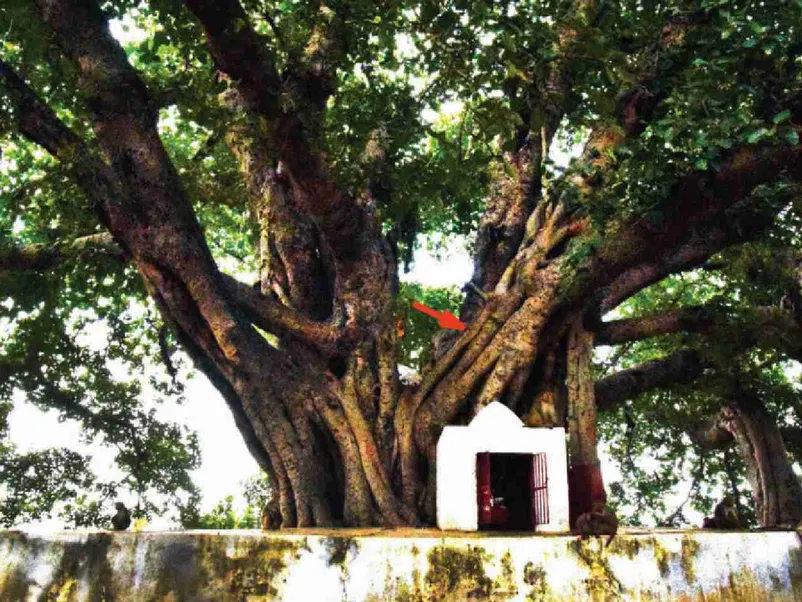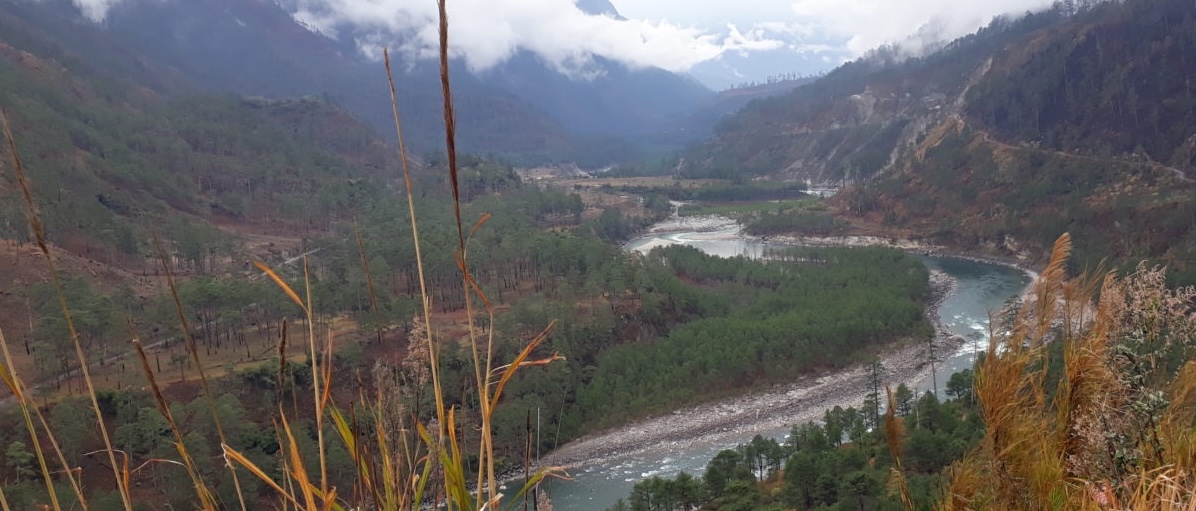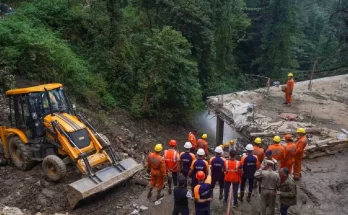Botanists warn about threats faced by the Indian Banyan ranked 10th largest in the world for its crown spread.

Banyan Tree in Uttar Pradesh’s Narora (Photo Credit: Research Paper)
New Delhi, Jun 1: The radiocarbon analysis of a large Indian banyan (Ficus benghalensis) at Narora in Uttar Pradesh has established that the tree that is already the 10th largest in terms of area covered, is more than 450 years old, thus making it the oldest carbon dated banyan in the world.
The banyan tree with huge canopy was discovered at Siddhwari sacred grove about 8 kms from the Narora Atomic Power Station during floristic surveys between 2012 and 2017 in the Upper Ganga Ramsar Site. The tree is located on the highest elevation point of the Ramsar site at 170 metres above mean sea level, on the northeastern flank of the River Ganga in Bulandshahr.
Indian banyans are a superlative species, claiming the title of the largest trees in the world by canopy coverage and broadest crown spread, a research paper titled ‘Radiocarbon analysis of the Indian banyan (Ficus benghalensis L.) at Narora’ in the May 25, 2023 issue of Current Science, said.
Ficus benghalensis L., is endemic to India and is the national tree.
The largest F. benghalensis as measured by net covered area is Thimmamma Marrimanu in Andhra Pradesh, with a coverage of 19,107 sq. m; followed by Kabir Vad banyan tree in Gujarat, which spreads over 17,520 sq. M, and the Giant Banyan tree at Majhi, Uttar Pradesh (UP), with 16,770 sq. m. The Great Banyan tree in the A J C Bose Indian Botanic Garden in Kolkata, West Bengal, previously considered the largest banyan in the world, now ranks fourth with a coverage of 16,531 sq. M, the paper pointed out.
This Indian banyan has a cbh of 10.5 metre (circumference at breast height, i.e. at 1.30 m above ground), a height of 27.7 m and covers an area of 4,069 sq. m, making it the tenth largest F. benghalensis in the world. The tree has two distinct units, consisting of two main, primary stems reinforced by a mesh of roots and only four large prop roots ranging from 1.00 to 4.10 m in circumference, which have developed in to secondary stems.
“The prop roots can be found on the western side of the tree, promoting a unilateral expansion towards the Ganga River Basin. The banyan is the centre piece of the Siddhwari sacred grove, which occupies about 7 ha of the Ramsar site area and is being protected by the local community, who consider it to be a sacred wish-fulfilling tree (Siddhwari vriksha) about 500 years old,” the researchers described.
Pointing out that the study of trees using traditional dendrochronological methods in order to ascertain their ages is relatively scarce in India even when the potential of trees to serve as proxies for past climate reconstruction has been explored in recent years, the scientists asserted the need for more research required to fill in the existing growth-ring research gaps. Especially so for the genus Ficus, as “it remains unclear whether all species have non-annual growth rings,” said the researchers, including Arti Garg of the Botanical Survey of India.
Radiocarbon analysis or tropical dendrochemistry represent alternative dating methods for tropical trees that enable precise age determination irrespective of the growth ring periodicity, the researchers said and utilised the AMS (accelerator mass spectrometry) radiocarbon analysis, the authors Roxana T. Patrut, Arti Garg, Adrian Patrut, Stephan Woodborne, Laszlo Rakosy and Ileana-Andreea Ratiu. Corresponding author Roxana Patrut, Adrian Patrut and Rakosy belong to Babeş-Bolyai University, Romania while Woodborne belongs to iThemba LABS, Johannesburg, South Africa.
“Its unusual architecture consists of two main units containing the primary stems covered by roots and four secondary stems represented by prop roots, which disproportionately support the unilateral expansion of the canopy towards the River Ganga. This unbalanced growth calls for implementing preventive protection measures to monitor and conserve this archaic botanical treasure. Dating results reveal the oldest-aged sample to be 346 ± 40 years BP, which corresponds to a calibrated age of 430 ± 35 cal years. A conservative age estimation suggests 450 ± 50 years for the Indian banyan at Narora, thus becoming the oldest dated banyan in the world,” the paper said.
The paper has words of praise and words of caution both. “Holding such records is possible not only due to the sacred status of the Indian banyan, which prohibits them from being cut down, but also to their singular ability to propagate aerial roots, which emerge from branches or the trunk, anchor into the ground and gradually develop into new, woody secondary stems. Over time, a banyan tree with a single stem develops into a complex network of interconnected stems, some merging perfectly together or with the main stem, supporting the spread of the tree,” writer the researchers, “Thus, Indian banyans can potentially reach advanced ages.”
Speaking about other identified threats for the investigated banyan were modernisation and globalisation, dwindling religious beliefs and the dampening of sacred ethics, which would also endanger the Siddhwari sacred grove. “Climate change induces an additional risk with an increase in severe weather events and changes in rainfall patterns, adding to the growing list of pressures on trees. Large, old trees have a higher sensitivity to drought than younger ones and are also a preferred target for insect attacks,” says the paper.
The researchers suggested including the specimen in gene and seed banks that will ensure the conservation of the original gene pool and the sustainable future propagation of improved cultivars.
(This story first appeared on news9live.com on Jun , 2023 and can be read here.)



